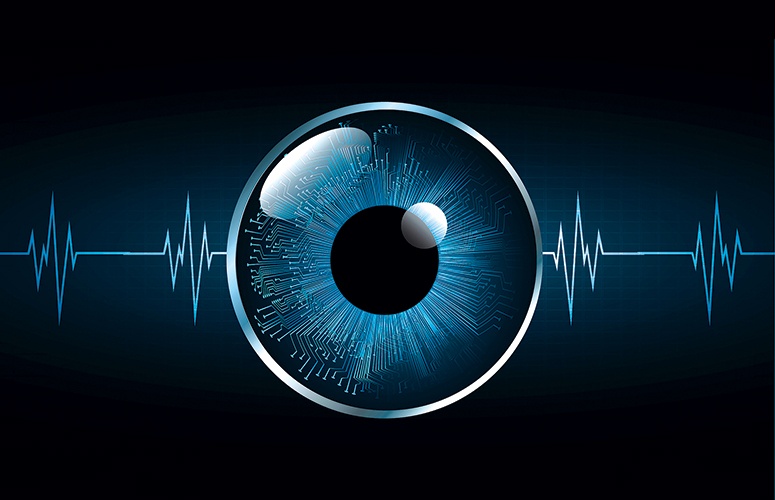
Eye Health in a Digital World
By Dr. Premilla Banwait On Nov 15, 2023While that screen time may be unavoidable in some cases, it’s important to recognize that excessive exposure to blue light may have short- and long-term consequences – both for your employees and your organization. That’s because blue light, which is a short-wavelength, high-energy light, has the potential to disrupt daily routines and damage the eyes over time.
The sun is the largest source of blue light, but computers, smartphones, and other digital devices also emit it – at much closer ranges and for extended periods, even long after the sun has set. Researchers continue to evaluate the potential health implications that may come from too much exposure to blue light, including sleep problems and symptoms that are collectively called digital eye strain. By considering these tips, employers can help employees reduce the risk of digital eye strain in the short term while helping prevent potential long-term eye health issues. Here are five strategies for employers to consider to help reduce the potential health and productivity impacts of all that screen time:
Share information about healthy computer use.
Remind employees to increase the distance between their eyes and their screens. Employees should try to avoid long sessions in front of screens, in part by following the 20-20-20 rule: After 20 minutes of computer use, stop and focus on something that’s at least 20 feet away for at least 20 seconds to give your eyes a break.
Focus on clear computer screens.
Encourage clean computer screens to help improve display readability. Suggest repositioning computers or using curtains, shades or blinds to help avoid harsh lighting that puts shadows or glare on the screen. Also, consider making available screen filters to help employees reduce their blue-light exposure at work.
Encourage comprehensive eye exams.
Squinting while looking at screens, discomfort or dizziness may all be signs of eye problems that can be identified during a comprehensive eye exam.
Offer vision plans with additional resources.
Glasses with an anti-reflective coating may help prevent digital eye strain symptoms. Employers can look for a vision plan that provides discounts on blue-light-filtering eyewear, which may help employees reduce the risk of developing digital eye strain.
Tap into safer technology.
Some laptops and monitors now have built-in technology designed to help filter out blue light without diminishing the viewing experience. Some laptops now feature embedded blue-light-filtering properties, while specialized screen protectors with similar technology can enable employees to retrofit existing smartphones, tablets, laptops and computer monitors.
About the Author: Dr. Premilla Banwait is the vice president of clinical programs for UnitedHealthcare Vision, a company serving more than 25 million people enrolled in employer-sponsored, individual, private label and Medicare and Medicaid plans.
To access more business news, visit NJB News Now.
Related Articles:





